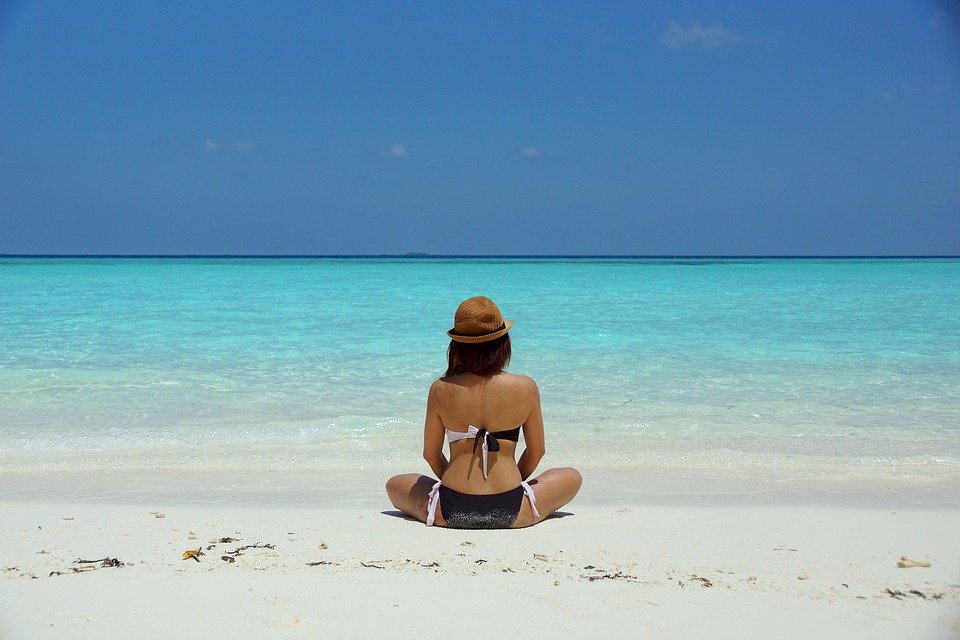There are lots of people who love the look of tan or sun-kissed skin. This is the reason why they like to spend long hours under the sun to achieve the perfect summer glow. However, spending too much time in the hot sun can have dangerous effects on the skin. It can accelerate skin aging, or worse, it can lead to developing skin cancer. But it seems like people won’t be stopped from getting tanned. Therefore, the ultimate solution to prevent health issues is to find a way to get tanned without the damaging effects.
If you are one of the people who look forward to getting the perfect sun-kissed tan every summer but are also looking for much safer ways to achieve it, then you’re in the right place. Today, we are going to give you tips on how to safely tan without damaging your skin.
Avoid Tanning Beds
Lots of people opt for hitting the tanning bed to get the perfect sun-kissed tan. If you’re one of them, you need to think again. It’s because tanning beds give out harmful UV radiation, which can lead to fast-forming wrinkles, brown spots, and even skin cancer. According to the Skin Cancer Foundation, people who use tanning beds before the age of 35 have a 75% more risk for melanoma. Therefore, it’s better to go for other options and skip the tanning beds.
Make Sure to Use the Right Sunscreen
Even if your goal is to get tanned, it is still important to use sunscreen. Aside from finding the SPF label on the bottle, another thing you need to look for is the term “broad spectrum” or the UVA logo with the word “high”. When hitting the beach, choose sunscreens with SPF30 over SPF50, because the latter can give a false sense of security, and it can just become chalky on the skin. Make sure that you apply a handful of sunscreen at least 30 minutes before you go under the sun, and reapply some after swimming.
Limit Your Tanning Time
Keep in mind that your skin has a tanning cut-off point. It means that at that point, it can no longer produce any more melanin, which is the tanning pigment. Therefore, it will be pointless to spend lots of time swimming at the beach or lounging by the pool. People who have fair skin usually have a melanin cut-off of 2 to 3 hours or even less. After that cut-off, the skin will be at a higher risk of UV damage.
Throw Some Shade
Any part of the body can be subject to sun damage. When you’re tanning under the sun, it is still important to wear sunglasses, hats, and to stay in the shade every once in a while. Remember that your eyes are delicate, and it is crucial to protect them from the UV rays as well.
Do Not Overexpose Yourself
The best method when looking to get a tan is the low and slow one. This means that you only need about 30 to 60 minutes under the sun each day to acquire the melatonin your skin needs to boost your tan. Therefore, avoid being under direct UV strength during peak sunshine hours, which is usually from 10am to 4pm. If you want to get really serious you can consider options like xray aprons as well.
Take a Break
After some time in the sun, you need to cool down inside before going out again. This is just like taking a break from long periods of working out or exercising. When you take a break from the sun, your sunburn risk, and the UV intensity as well. It can also make your tan healthier and longer-lasting.
Try Tan Optimizing Supplements
For most people, tan optimizing supplements are more effective compared to using tan-accelerating creams. It’s because there’s nothing you apply to your skin that can improve the production of melanin. But if you take a 25g beta-carotene supplement daily, it can improve your skin’s production of melanin, boosting the skin’s natural defense against UV by enhancing its ability to tan.
Avoid Using Tanning Oils
Tanning oils usually contain chemicals, preservatives, and artificial dyes that can irritate the skin. More than helping your tan, these oils can just dry out your skin, so it’s better to say pass to them.
Eat Foods that are Sun-Friendly
Certain foods are known to increase lycopene, which is the skin’s own SPF. Also, foods that are rich in antioxidant “carotene” can help boost the skin’s pigmentation. Therefore, if you want to achieve a healthy tan, you can start by eating carrots, tomatoes, sweet potatoes, kale, spinach, and cantaloupe.
Aside from those, you can also eat dark chocolate. It contains flavonoids that can help protect your skin from sunburn. Caffeine is also thought to help decrease the risk of skin cancer. So before you hit the beach, you can also take an espresso shot.
Try Artificial Tan
Artificial or fake tan does not have any sun protection, but it can help you avoid burning your skin. Therefore, before you attend a bikini party or beach party, you can treat yourself to a spray tan.
These are some of the best tips we can give to safely tan without damaging your skin. We hope these can help you achieve the sun-kissed skin you are dreaming to have. Stay safe and beautiful!

